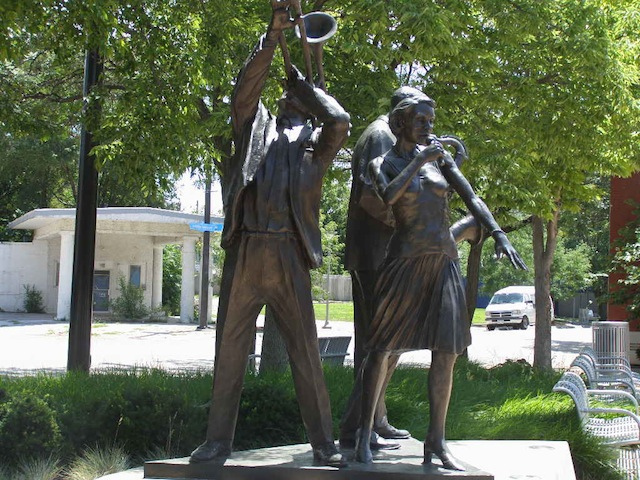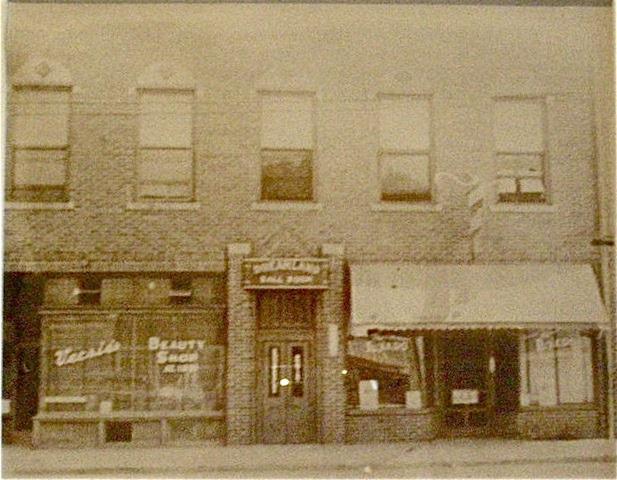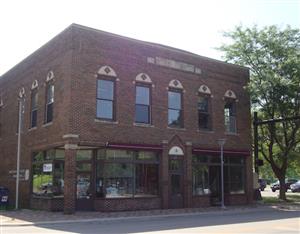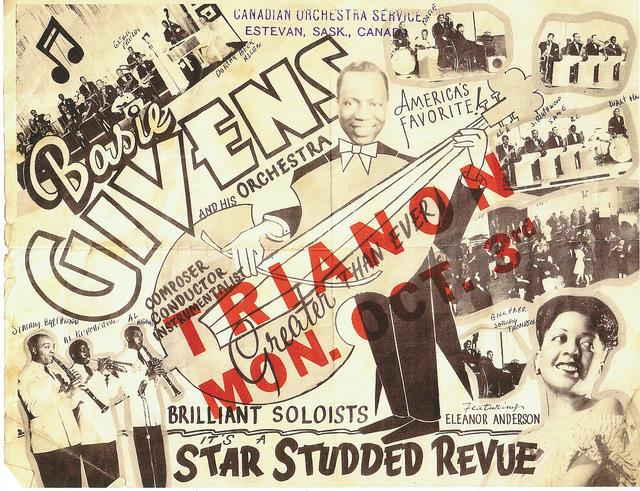Making Invisible Histories Visible
Page Navigation
- Making Invisible Histories Visible
- Lesson Plans and Resources
- iBooks on Omaha and Nebraska History for Primary Students
- Omaha Mapping Projects
-
African American Histories
- African American Artists
- African American Athletes & Facilities
- African American Churches
- African American Civil Rights Organizations - 1950s-1960s
- African American Civil Rights
- African American Contributions to Jazz, Gospel, Hip-Hop
- African American Dramatic Arts
- African American Education - Dorothy Eure & Lerlean Johnson
- African American Educators & Education
- African American Firefighters
- African American Homesteaders
- African American Law Enforcement
- African American Migration to Omaha
- African American Musicians of Omaha
- African American Newspapers
- African American Owned Businesses
- African American Politicians
- African American Social Life
- African American Workers at Omaha's Railroads & Stockyards
- African American Workers at the Naval Ammunition Depot in Hastings
- African Americans in the Civil War
- African Americans in Vietnam
- Charles B. Washington - Journalist and Civil Rights Leader
- Elizabeth Davis Pittman - Lawyer/Judge
- Green Book Omaha
- Marlin Briscoe - Professional Football Player
- Native Omaha Days
- Nebraska's Role in the Underground Railroad
- Sen. Edward Danner - Politician & Civil Rights Activist
- Sudanese Refugees
- Tuskegee Airmen
- European and Asian Immigrant Histories
-
Historic Neighborhoods & Buildings
- 24th and Binney/Wirt/Spencer Streets
- 24th and Lake Streets
- Central Park Neighborhood - 42nd and Grand Avenue
- Dahlman Neighborhood - 10th and Hickory Streets
- Hartman Addition Neighborhood - 16th and Williams Streets
- Indian Hills/Southside Terrace Neighborhood - 30th and Q Streets
- Jefferson Square Neighborhood - 16th and Chicago Streets
- Long Neighborhood - 24th and Clark Streets
- Orchard Hill Neighborhood - 40th and Hamilton Streets
- Smithfield Neighborhood - 24th and Ames Avenue
- St. Mary's Neighborhood - 30th and Q Streets
- Latino Histories
- Music Histories
-
Native American Histories
- Black Elk and John G. Niehardt
- Chief Standing Bear and Susette La Flesche Tibbles
- Dr. Susan LaFlesche Picotte - Native American Doctor
- Native American Education and Boarding Schools
- Native Americans in the Military
- Pre-statehood Interaction of Native Americans and Europeans
- Preserving Native American Tradition
- Restoring the Ponca Tribe
- The American Indian Movement in the 1960s and 1970s
- The Indian Congress at the 1898 Trans-Mississippi Exposition
- The Omaha Native American Indian Tribe
- OPS Elementary School History
- Redlining in Omaha
- Nebraska's Role in the Underground Railroad
- The 1898 Trans-Mississippi Exposition
Omaha: The Triple-A of Jazz
-
What role did geography and place play in making Omaha an important scene for jazz?

-
Jazz played an important part in the history of North Omaha. Preston Love once said, "If New York, Chicago, and Kansas City were the major leagues of jazz, Omaha was the Triple-A.” Omaha was a stop for many of the top jazz musicians in the nation from the 1920s to the 1960s. The thriving jazz culture also gave birth to many great native Omahan musicians. Most African American jazz musicians were not allowed to play with white musicians. Those wanting to hear them were very limited on where they could go. Because of this, the Dreamland Ballroom at 24th and Grant streets became the popular destination for lovers of jazz music in Omaha. The Dreamland Ballroom was where most famous African American jazz musicians played, giving members of the community a chance to experience the energy and excitement of the era.
The Dreamland Ballroom, Tuxedo Pool Hall and Beauty Shop
-

The Jewell Building was built in 1923 on the southeast corner of 24th and Grant streets. The second floor of the Jewell building housed the Dreamland Ballroom, the premier jazz venue in North Omaha. The lower level of the Jewell Building housed a pool hall on the south end and a beauty shop and barber salon on the north end. The Dreamland Ballroom hosted musicians such as Louis Armstrong, Count Basie, Duke Ellington, Preston Love and Ray Charles playing on the stage in the northeast corner from the early 1920s to the 1960s. The rest of the 2,500 square foot space was set for dancing. With the end of the big band era and other venues opening to African Americans, the Dreamland closed in the early 1960s. (Photo courtesy of Omaha Economic Development Corporation)

Basie Givens and His Orchestra
-

Elmer "Basie" Givens started his own band at the age of 15, called "The Jungle Rhythm Boys." Even though his instruments were homemade, his band evolved into the well-known Basie Givens Orchestra. In addition to playing in Omaha, his band traveled the circuit to surrounding states and Canada. (Photo courtesy of Patricia Barron)
Additional Information
-
From the turn of the 20th century through the 1960s, North Omaha hosted many great musicians. One of the first major musicians to play in Omaha was Dan Desdunes. As a young man in New Orleans, Desdunes formed various bands with boys from the neighborhood and played small shows. An agent of a minstrel show heard the band and offered him a job. In 1904, after several years on tour, he got off the train in Omaha and found work as a janitor. Desdunes directed several bands and created his own band as well. His band performed often in Omaha and toured the Midwest. He also trained a generation of Omaha bandleaders.
Omaha’s jazz scene was able to thrive because of the city’s position on the Union Pacific Railroad. Top national acts traveling between Kansas City, Denver, Chicago, and Minneapolis would stop in and play shows at venues such as the Dreamland and Carnation ballrooms. The vibrant jazz scene inspired many young musicians to play and gave them opportunities to stand in with their heroes.
One such musician was Preston Love. Preston Love was able to stand in as a saxophonist with Count Basie’s band in 1942 and was offered a permanent place in his touring orchestra following the performance. After leaving Basie’s band in 1948, he returned to Omaha and formed his own orchestra, eventually becoming the bandleader for Motown Records’ band.
Many notable musicians grew out of the rich musical culture of North Omaha. Josiah Waddle formed Omaha’s first African-American band in 1902 and taught many students to play. Anna Mae Winburn led several local bands before leading the International Sweethearts of Rhythm, the first integrated all-women’s band in the United States. Wynonie Harris, a musician and singer, and Buddy Miles, a drummer who went on to play with Jimi Hendrix, both made their marks on rock & roll after growing up in Omaha's vibrant music scene.
2010 MIHV Project
Student Reflections
-
"I never knew Omaha had such a rich, powerful history. This one week has changed the way I see the world. I don't see it for what it is now; I try to imagine what it was in the past."
- Brittney C.
"Before I came to this program, I didn't even know what the Jewell Building was. I didn't know about Preston Love, Will Brown, or Duke Ellington. This program did what the title said it would do, 'Making Invisible Histories Visible.' After tomorrow, I can’t walk down 24th Street in Omaha and say 'I don’t know about the Jewell Building.'"
- Trent H.
"I learned that black history is very important to our world and that we should pass it on and tell people about what happened in history. Some of the important things were the riots and the rebellions. The reason for those things was African Americans wanted the same rights as the white people did."
- Cora S.
Resources
-
Howard, Ashley M. “Then the Burning Began: Omaha, Riots, and the Growth of Black Radicalism, 1966-1969.” MA. Thesis., University of Nebraska-Omaha, 2006.
Otto, Jesse. "Contemporaries: Black Orchestras in Omaha Before 1950." MA. Thesis., University of Nebraska-Omaha, 2010.
Pinkett, H.J., An Historical Sketch of the Omaha Negro. Omaha, NE: H.J. Pinkett, 1937.
Smith, Alonzo N., Compiler. Black Nebraskans – Interviews from the Nebraska Black Oral History Project II. Nebraska: Nebraska Committee for the Humanities, 1982.
Special thanks to Dr. Everett Reynolds and Jesse Otto. Their assistance with this project has been invaluable.
Research compiled by: Brittney C., Trent H., Cora S., Jennifer Moyer, and Brandon Locke

